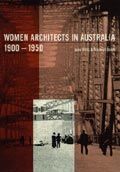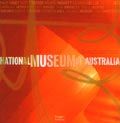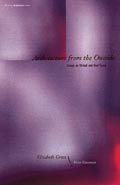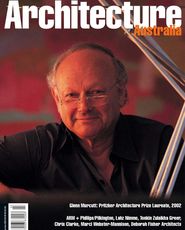Women Architects in Australia 1900-1950

Julie Willis and Bronwyn Hanna. RAIA Education Unit, $49.50.
This is a landmark book in recovering a previously lost history of women’s involvement in architectural developments in Australia during the first half of last century. Indeed it is one of the first histories of its kind in the world. Willis and Hanna offer a very readable descriptive history based on institutional archives, historical journals, and an impressive body of oral histories which they, and others, have gathered. Although women have appeared to be relatively invisible in the story of Australian architecture the authors assert that this is a consequence of how history is constructed rather than a true reflection of women’s real presence. In fact, over one hundred women contributed to architectural production and discourse throughout the period working in all aspects of practice and on a comprehensive range of building types.
The book is divided into four periods, Federation to World War I (1900-18), post-World War II to the Great Depression (1919-29), the Depression years to World War II (1930-39) and post-World War II (1940-50). Interspersed in the narrative are the personal stories of more than 20 significant women architects. A concluding critique of the obstacles and advantages experienced by women in architecture is offered. In this chapter an attempt is made to be inclusive of the disparate views and experiences described of discrimination (or lack thereof) in education, employment, experiences on building sites, pay, sexist assumptions, and balancing career and family.
One of the strengths, but also limitations, of this history is its sociological approach focussing on the cultural obstacles women faced in entering and maintaining a presence in the architectural profession. The authors observe that architectural history typically ignores the cultural context of architecture and the limitations it places on architects leading to the exclusion of most women from historical accounts. However, the consequence for this book is that there is o critique of the architecture produced by the women cited, nor does it address the question of whether, as a group, their designs are in some way “gendered”. As this is a brief introductory history this is an appropriate limitation, opening the way for further scholarship in the area.
Janet McGaw
Tangled Destinies: National Museum of Australia

Edited by Dimity Reed. Images Publishing, $69.95.
This lavishly illustrated book comprises essays on the National Museum of Australia by key figures involved in its creation and by several critics. The aim is to document design intentions and to show how the building and landscape can elicit imaginative responses from the beholder.
Following brief introductory essays – one by the editor, Dimity Reed, the other by the director of the NMA, Dawn Casey – three themes are considered in turn: “Architecture”, “Landscape” and “Exhibition”. Each thematic section begins with an essay from the relevant designer(s).
Howard Raggatt of ARM writes about the architecture, referring to extraordinary geometric and spatial games as well as to the more readily understood cultural ideal of multiple stories defining Australia. The latter notion is part of the book’s title, Tangled Destinies. Other essays generally acknowledge Raggatt as the author of key ideas and of the buildings. The text by Richard Weller, one of the designers of the museum’s landscape, notes that Raggatt’s concept of winding Boolean strings links architecture and landscape, the former emerging as a “knot”, the latter, a “fabric”.
The critics who offer comment on the three themes include high profile names like Charles Jencks and Deyan Sudjic. Both write well about the NMA’s eclecticism and layered meanings. However, as many local authors – particularly Melbourne-based ones – could skilfully handle these topics, Jencks and Sudjic seem to have the real task of ensuring the interest of a large international audience. This is significant, because overseas readers have, for too long, assumed that Australian buildings grow out of unique climatic conditions, a reasonable understanding of structure, and the needs of people living beyond the complex culture of cities and suburbs. The publication of the NMA draws attention to a very different design strategy; one enriched by quotation, fragmentation, colour and applied ornament. The visitor to the NMA may enjoy a lyrical and beautiful space, yet then be repelled by the sight of forms based on an image of the body in pain. The building stimulates such opposing responses, while also engaging one in the intellectual process of reading complex symbols and texts.
Peter Kohane
Architecture from the Outside: Essays on Virtual and Real Space

Elizabeth Grosz. MIT Press, $48.
This book consists of nine essays and an interview undertaken by expat Austalian Elizabeth Grosz between 1994 and 2000. Over half of these have been published elsewhere. Assembled in a single volume, the course of Grosz’s engagement with a discipline to which she is, by profession, an outsider can be appreciated.
The “outside” of the title is developed by Grosz as a metaphorical third space beyond philosophy and architecture from which hitherto unasked questions and possibilities can be put to the architectural discipline. Some of these questions are to do with the outsider or other, a familiar theme to those who know her scholarship in feminist theory and her project of rethinking bodies. More often, the questions here develop out of the challenges inherent in new technologies, particularly virtual reality. These are considered in parallel with arguments about spatiality, temporality and embodiment developed in the writings of Gilles Deleuze, Henri Bergson and Luce Irigaray.
To the third space she brings an understanding of philosophy which is sympathetic, critical and highly engaging. Philosophy is recognised as a fractured discipline deepened by internal differences and its own discursive history. By contrast, her references to architecture, space and the city are as if each of these were monolithic and abstract terms without internal history and division. Although she questions whether architecture might be thought as other than as a unified whole, her reluctance to do so herself is frustrating. Following Deleuze she endows philosophical concepts about the arts with an origin and value independent of artistic practices and production. Grosz leaves it up to architects to bring to the third space the complexity, specificity and richness with which she endows philosophy.
For those readers looking for a wellunderstood and clearly written account of current philosophical strains this is a useful book. For those already familiar with the theoretical ambit she occupies and hoping to see greater entanglement between philosophy and architecture this book is maddeningly hesitant. This collection of rigorously considered questions and insights is best read as an invitation to the reader to make those moves themselves.
Sandra Kaji-O’Grady















